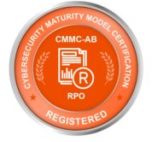When it comes to CMMC, you need to have a plan of action and milestones. Our guide will walk you through this process.
Did you know that one in three small to medium-sized businesses need to undergo an assessment in the next year or two in order to maintain CMMC compliance? And another one in four fear they won’t be able to afford to implement the necessary updates. Do you know where you stand in terms of this important compliance regulation?
If not, then you need to create your plan of action and milestones. Don’t worry if you don’t know what that is or where to get started because we’ve got you covered. Keep reading to learn everything you need to know about POAM and CMMC compliance.
What Is a POAM?
POAM stands for plan of action and milestones. This acronym refers to a specific document IT managers use to identify risks within their company’s systems. Every company worries about cybersecurity, and for good reason. Cybercrime has hit an all-time high around the globe.
To combat this, IT departments everywhere are working to stay CMMC compliant through the use of risk analysis. They document this risk analysis and outline the steps needed to plug the gaps and ensure the best corrective actions are taken to prevent a cyberattack.
Your POAM must include the following items:
- Your current security level (low, medium, high).
- Identify weaknesses and gaps.
- Evaluate and describe each weakness along with its scope.
- Map out a solution to fill the gaps and mitigate risk.
As you can see the plan of action and milestones are incredibly important to every company. You must ensure that your company and your information stay secure. You can do that with a POAM.

Top POAM Benefits
Your IT department impacts your entire company. Having the right cybersecurity controls means that you and your team can properly detect and prevent security risks. Everyone benefits when you stay compliant and mitigate the risk of cyberattacks.
Identifies Potential Risk
Cybersecurity changes every day. And you must stay abreast of changes happening both internally and externally. Employees come and go, passwords get forgotten, and criminals find new tactics for phishing information.
Without continual assessment and implementation of changes, you run the risk of falling prey to cybercrime. The best way to keep up is to use the tools available such as your plan of action and milestones. This document will show your team the roadmap to follow to ensure that your company stays compliant.
Outline Necessary Steps
It can be difficult to know what steps to take and when. However, one key benefit of following a POAM is that your team has a map they can follow. Your POAM outlines the weaknesses found in each assessment as well as the steps necessary to plug the gaps and update any weaknesses.
Maintain Accountability
Lastly, another benefit of using a POAM is that it builds accountability for your team. Everyone knows what is expected of them and when. Each step is outlined along with the necessary milestones that must be reached by certain deadlines.
Your plan of action manages and mitigates the risk on a specific timeline. When everyone knows what is expected of them they can both successfully meet their targets. Additionally, accountability is baked into each assessment if a milestone is missed.

How to Stay CMMC Compliant With Plan of Action and Milestones
If your company relies on DoD contracts then you need to stay compliant with CMMC. And to do that you need to maintain a living POAM document at all times. To stay compliant and ensure you can maintain important contracts for your organization, follow these three tips.
Assess All Out of Date Legacy Systems
Stop trying to create elaborate workarounds trying to fix the original systems. There are newer and more robust systems that can replace your legacy programs. Sometimes it makes more sense to take a hard look at your legacy systems to see if they should be fixed or replaced completely.
To maintain CMMC standards you must ensure that your systems are up to date. To do that, take the time to assess each of your systems. Then decide if a newer alternative will help improve your security and reduce risk.
Consider Your Budget
Unfortunately, you do need to consider your budget, after all, worldwide risk management budgets are expected to escalate by over 12% to $150 billion in the next year. While you might want to run out and invest in the newest programs, take the time to analyze your budget. Then determine the best plan of action based on your finances so that you can keep your company solvent.
When fixing security gaps consider which ones take priority and what can be patched. Look at all your resources including labor and any software licenses you have, then make your decision on what milestones you’ll focus on first. Give each milestone a priority and map them out accordingly so you keep your finances as secure as your systems.
Keep the End-User in Mind
Don’t forget that the people using your system aren’t thinking about cybercrime in the same way your IT department does. They will unintentionally ask a co-worker to use their system and thus learn their password. Additionally, they receive so many emails they aren’t aware of how many of them are phishing.
Your team members are your biggest asset, however, they can also be your biggest liability when it comes to cybersecurity. The majority of your risks and weaknesses are unintentional and inadvertent mistakes. While there will be certain unscrupulous and intentional breaches, the majority are in fact benign.
Take the time to keep your average end-user in mind. Ensure proper training and regular reminders to not click on external emails from unknown senders. Additionally, set up automatic password updates and remind everyone not to share their passwords with anyone.
Ensure Your Compliance Today
If you’re ready to start creating your plan of action and milestones then you can’t afford to delay any longer. And if you’re worried that you might not be able to stay up to date with the ever-changing DoD regulations then you need to work with a professional.
Here at Bridgehead IT, we help businesses just like yours tackle their IT projects and keep your company safe. Reach out to us to learn how we can help you create the right POAM (Plan of Action and Milestones) for your business today.
Contact us today about a security risk assessment for your business.
(210) 477-7900

POAM stands for plan of action and milestones. This acronym refers to a specific document IT managers use to identify risks within their company’s systems.
Every company worries about cybersecurity, and for good reason. Cybercrime has hit an all-time high around the globe.


